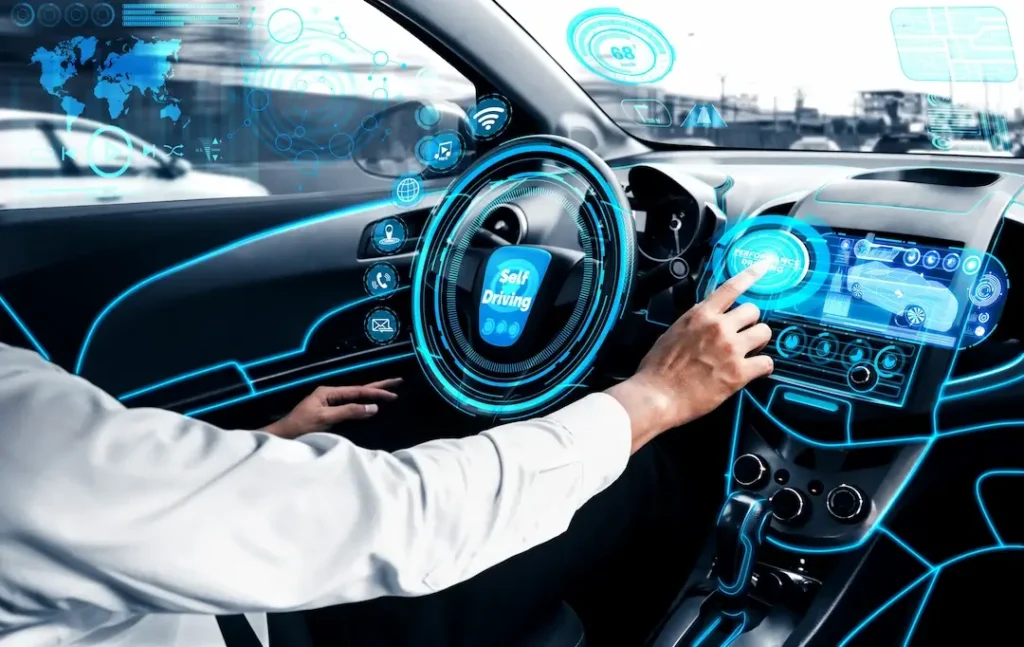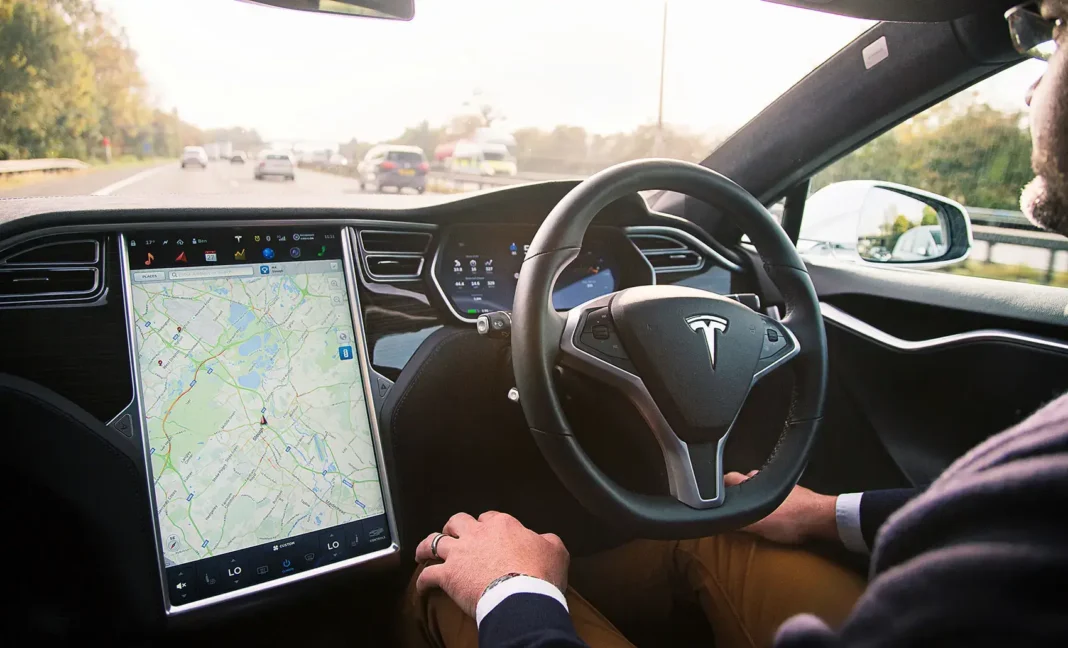Regarding cutting-edge vehicles, Tesla is essentially spearheading the automotive sector. The business is already ahead in the race for driverless or autonomous automobiles because it is innovation-focused. The introduction of Tesla Autopilot, a technology found in practically all new models, is one of the fascinating facts about Tesla automobiles. This software is proof of the company’s dedication to driving technological advancement in the automotive industry. It is a significant step toward the day when cars are completely driverless.
One may argue that the demand for Tesla automobiles has been influenced by Tesla Autopilot. Cars equipped with this feature are not yet completely driverless or automated, though. Semi-automatic autopilot software, or Tesla Autopilot, manages certain functions while driving. Today, we’ll talk about what Tesla Autopilot is, what it has to offer and how much it can control.
The Genesis of Tesla Autopilot
Tesla Inc., founded by Elon Musk in 2003, has always been at the forefront of electric vehicle technology. However, Musk’s vision extends beyond just electric vehicles; he envisions a future where cars are capable of driving themselves. In 2014, Tesla took a significant step toward this vision with the launch of Autopilot, an advanced driver-assistance system (ADAS) designed to improve safety and convenience for drivers.
Initial Launch and Development
The first iteration of Tesla’s Autopilot was launched in October 2014 with the release of the Tesla Model S. This initial version included features like lane centering, adaptive cruise control, and traffic-aware cruise control. It relied heavily on a suite of sensors, including radar, cameras, and ultrasonic sensors, to gather data about the car’s surroundings and make informed decisions.
Tesla’s commitment to iterative improvement is evident in the numerous updates and enhancements that have been rolled out since Autopilot’s inception. Over the years, Tesla has continuously refined the system, incorporating advanced algorithms and leveraging the power of artificial intelligence (AI) and machine learning.
How Tesla Autopilot Works
At the heart of Tesla’s Autopilot system is a sophisticated blend of hardware and software that allows the vehicle to interpret and respond to its environment. Understanding how Autopilot functions is key to appreciating its capabilities and limitations.
Hardware Components
Tesla vehicles equipped with Autopilot are outfitted with a comprehensive array of sensors, including:
- Cameras: Tesla cars are equipped with eight external cameras providing a 360-degree view around the vehicle. These cameras are crucial for detecting lanes, reading road signs, and recognizing other vehicles and pedestrians.
- Radar: A forward-facing radar complements the camera system, helping the vehicle gauge the speed and distance of other vehicles, especially in adverse weather conditions where visibility might be reduced.
- Ultrasonic Sensors: Twelve ultrasonic sensors provide the vehicle with proximity data, allowing it to navigate tight spaces and assist with parking.
Software and AI
The real magic of Tesla Autopilot lies in its software. Tesla uses deep learning algorithms and a powerful onboard computer, known as the Tesla FSD (Full Self-Driving) computer, to process data from the sensors in real-time. This system is capable of making split-second decisions based on a continuous analysis of the driving environment.
Tesla’s AI learns from millions of miles driven by Tesla vehicles worldwide. This fleet learning capability enables Tesla to improve Autopilot’s performance by collecting and analyzing data from every car in its network, thereby refining the system’s ability to handle a wide range of driving scenarios.
Key Features of Tesla Autopilot
Tesla’s Autopilot offers a range of features designed to enhance driving safety and comfort. These features can be grouped into basic Autopilot functions and more advanced capabilities available through the Full Self-Driving (FSD) package.
Basic Autopilot Features
- Traffic-Aware Cruise Control: Adjusts the speed of the car based on the speed of surrounding traffic.
- Autosteer: Keeps the vehicle centered in its lane, maintaining a set speed and distance from other vehicles.
- Traffic Light and Stop Sign Control (Beta): Detects traffic lights and stop signs, alerting the driver to prepare to slow down and stop.
Full Self-Driving (FSD) Features
- Navigate on Autopilot: Guides the car from a highway on-ramp to an off-ramp, managing lane changes and interchanges.
- Auto Lane Change: Changes lanes automatically with driver confirmation.
- Autopark: Automatically parks the car in parallel and perpendicular spaces.
- Summon: Moves the car in and out of tight spaces using the Tesla app.
- Smart Summon: Allows the car to navigate complex environments and parking lots to reach the owner.
- Autosteer on City Streets (Beta): Extends the capabilities of Autosteer to urban environments with more complex traffic scenarios.
The Benefits of Tesla Autopilot
The promise of autonomous vehicles lies in their potential to transform transportation in several significant ways. Tesla Autopilot is already delivering some of these benefits, even as the technology continues to evolve.
Enhanced Safety
One of the primary advantages of Tesla Autopilot is its potential to improve road safety. Human error is a leading cause of accidents, and by automating certain driving tasks, Autopilot aims to reduce the likelihood of collisions. Features like adaptive cruise control, autosteer, and automatic emergency braking work together to help drivers avoid potential hazards.
Tesla’s data shows that vehicles equipped with Autopilot are involved in fewer accidents per mile compared to those without it. While these statistics are promising, it’s important to remember that Autopilot is designed to assist drivers, not replace them. Tesla emphasizes the need for drivers to remain attentive and ready to take control at any moment.
Convenience and Comfort
Autopilot’s features are designed to make driving more convenient and less stressful. Long highway drives, which can be tiring and monotonous, are transformed by features like Navigate on Autopilot and auto lane change. These capabilities allow drivers to relax and focus less on the minutiae of driving, resulting in a more comfortable journey.
Environmental Impact
Tesla’s commitment to sustainability extends beyond electric drivetrains to encompass Autopilot as well. By optimizing driving patterns and reducing unnecessary acceleration and braking, Autopilot can contribute to increased energy efficiency. This not only benefits Tesla owners by extending the range of their vehicles but also aligns with broader environmental goals.

Challenges and Controversies
While Tesla Autopilot offers numerous advantages, it has also faced its share of challenges and controversies. Some of these issues stem from the technology itself, while others arise from the complex regulatory landscape surrounding autonomous vehicles.
Safety Concerns
Despite its safety features, Autopilot has been involved in several high-profile accidents. Critics argue that the system’s branding and marketing may give drivers a false sense of security, leading them to overestimate the system’s capabilities. Tesla has been clear that Autopilot is not fully autonomous and requires active driver supervision, yet some drivers have misused the system, with tragic results.
Regulatory Hurdles
The regulatory environment for autonomous vehicles is still evolving, and Tesla’s approach to releasing new features has sometimes sparked debate. While Tesla uses over-the-air software updates to improve Autopilot continuously, some critics argue that these updates should undergo more rigorous testing and regulatory approval before being deployed to the public.
Ethical Considerations
Autonomous driving technology raises complex ethical questions. In scenarios where an accident is unavoidable, how should the car’s AI prioritize the safety of passengers, pedestrians, and other road users? These ethical dilemmas are not unique to Tesla, but as a leader in the field, the company is at the forefront of these discussions.
The Road Ahead: Future of Tesla Autopilot
Despite the challenges, Tesla remains committed to advancing its Autopilot system and ultimately achieving full self-driving capability. The company envisions a future where cars can operate entirely without human intervention, revolutionizing transportation as we know it.
Technological Advancements
Tesla continues to invest heavily in AI and machine learning to improve Autopilot’s performance. The introduction of the Full Self-Driving (FSD) computer, known as Hardware 3, has significantly increased the processing power available for Autopilot. This hardware upgrade enables more advanced neural networks and algorithms, enhancing the system’s ability to navigate complex environments.
Tesla is also working on developing its own AI chips, which are expected to further boost Autopilot’s capabilities. These chips are designed specifically for the demands of autonomous driving, offering increased efficiency and performance.
Expanding Autopilot’s Reach
As the technology matures, Tesla aims to expand Autopilot’s capabilities beyond highways and into urban areas. The rollout of the “Autosteer on City Streets” feature represents a significant step in this direction, allowing Tesla vehicles to handle more complex traffic scenarios in cities.
Additionally, Tesla is exploring the potential for vehicle-to-vehicle communication and integration with smart infrastructure, which could further enhance the safety and efficiency of autonomous driving.
Regulatory and Legal Developments
The road to full autonomy is not just a technological challenge but a regulatory one as well. Governments worldwide are grappling with the implications of self-driving cars, and regulatory frameworks are evolving to keep pace with technological advancements.
Tesla actively engages with regulators to shape policies that support the safe deployment of autonomous vehicles. As these discussions progress, we can expect to see clearer guidelines and standards for autonomous driving systems, paving the way for broader adoption.
Conclusion: A Transformative Journey
Tesla Autopilot represents a significant milestone in the journey toward fully autonomous vehicles. With its blend of cutting-edge technology and ambitious vision, Tesla has pushed the boundaries of what is possible in the automotive industry. While challenges and controversies remain, the potential benefits of Autopilot in terms of safety, convenience, and environmental impact are undeniable.
As Tesla continues to refine its technology and expand its capabilities, we are witnessing the dawn of a new era in transportation. The road ahead is long and complex, but the promise of a future where cars can drive themselves is within reach. Tesla Autopilot is not just a technological marvel; it is a symbol of the relentless pursuit of innovation and a testament to the transformative power of technology in our lives.


